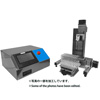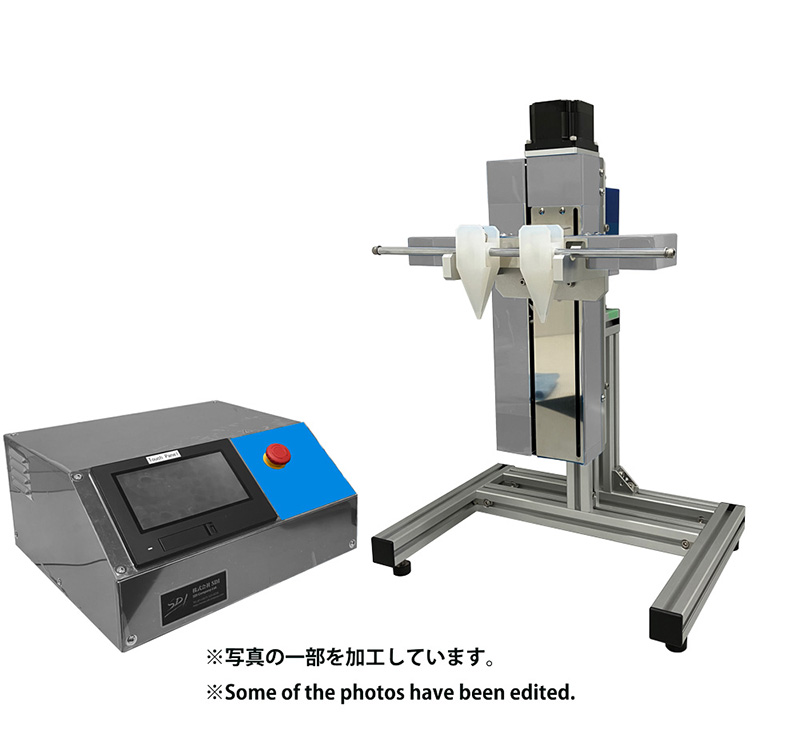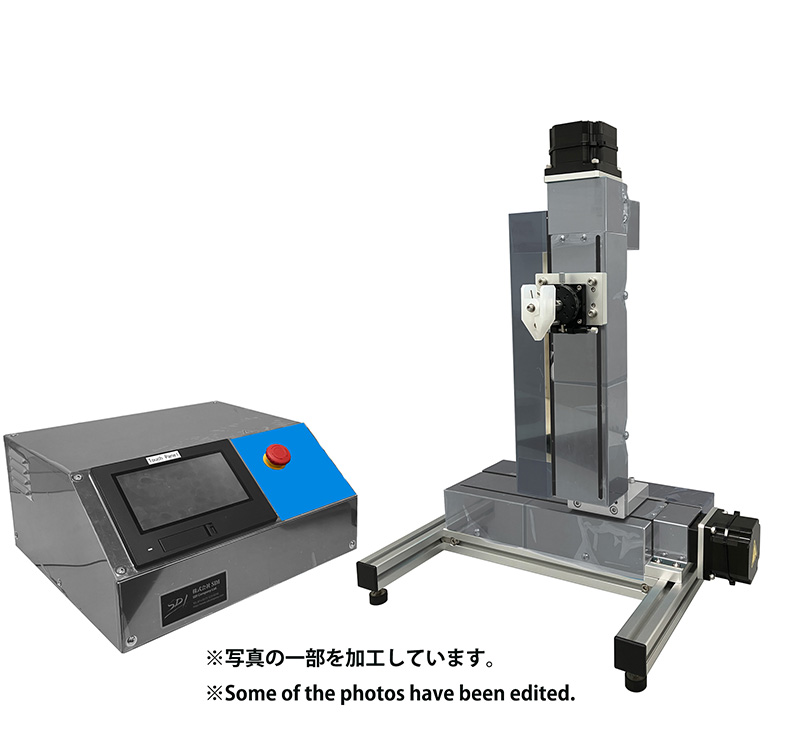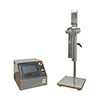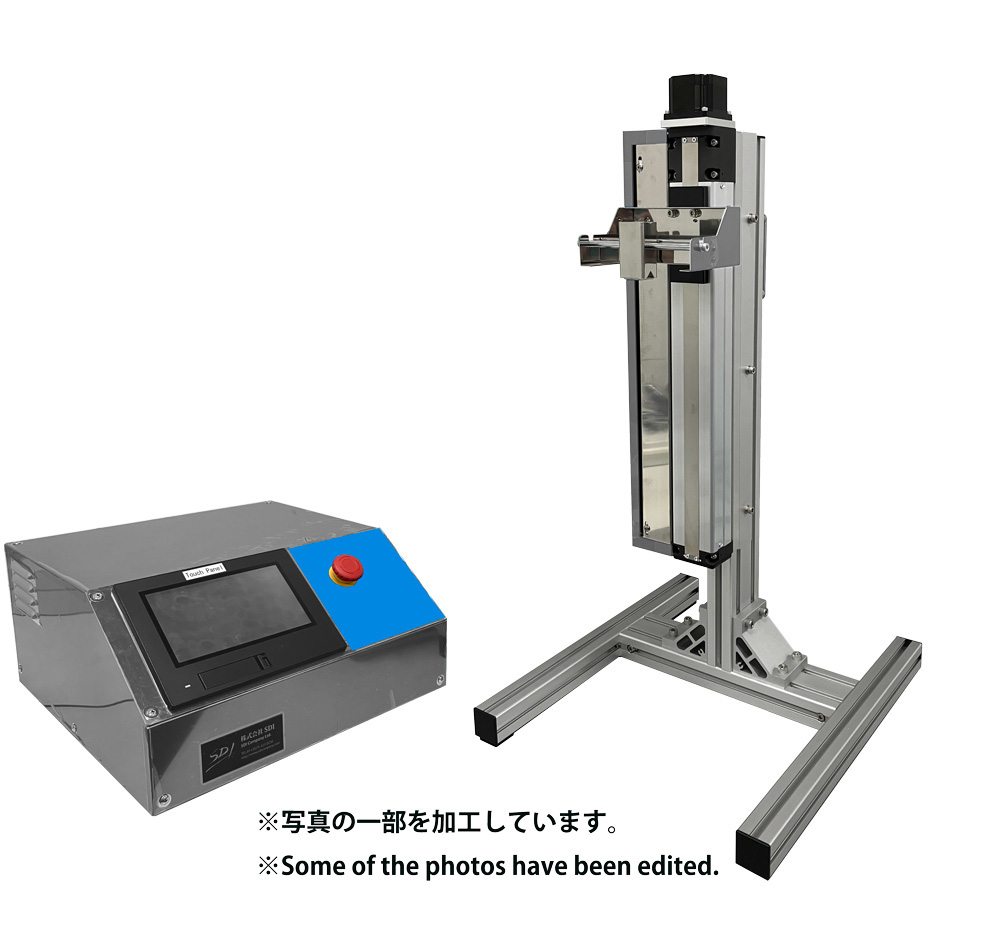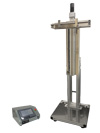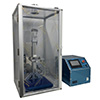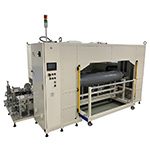Machine Translated by Google
2005/12/20
Fabrication of anisotropic multilayer particles
Ein Tesla Central Research Laboratory
[background]
The functionality and flexibility of organic materials and the heat resistance, chemical durability, and rigidity of inorganic materials are The realization of materials that have both properties such as linearity and elasticity is an important theme in the field of materials research. The combination of different materials can significantly improve the characteristics of a single material, compensate for its shortcomings, and express useful properties.GFRP (glass fiber reinforced plastic) and carbon fiber used as spacecraft materials Fiber-reinforced plastics are a well-known example. Recently, artificial bones, contact lenses, Composite materials such as glass and solid electrolyte membranes are being developed.
Therefore, we provide a method for producing anisotropic multilayer particles (particles in which different compositions are layered in different directions) with any desired function by pulverizing the composite material.
By microparticulating materials that have useful properties through compounding, the specific surface area can be increased and the functional efficiency can be improved.
It measures improvements in, etc.
[the purpose]
A method for producing microparticles that are composites of different materials is provided.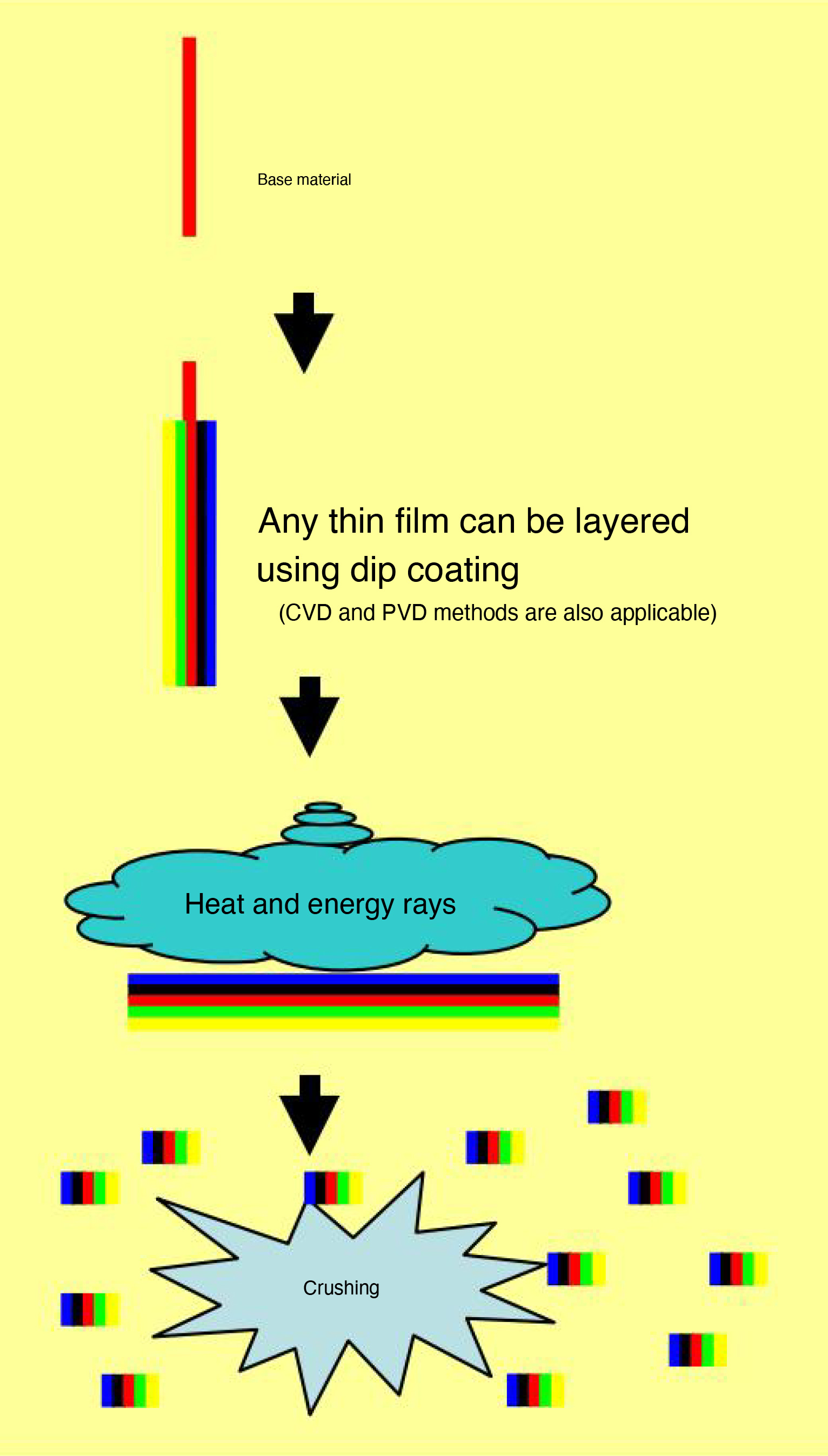
[Manufacturing process]
1. CVD, PVD, liquid phase deposition, etc.By applying the thin film formation method described above, a laminate of arbitrary heterogeneous compositions can be deposited on a substrate.
↓
2. Heat or energy ray irradiation is used to perform firing, etc.
Now.
↓
3. Grinding is carried out to obtain anisotropic multilayer particles.
[Example 1]
The surface of the cover glass (22 x 22 mm) was thinned by polishing with sound paper.Then, the mixture was dried naturally in an Ace homogenizer at 16,000 rpm.
As a result of grinding for 5 minutes at 1000 rpm, anisotropic multi-layered particles of 300 to 500 ÿm having resin-glass-resin layers as shown in Figure 1 were obtained.
[Example 2]
A mixture of epoxy resin and copper powder was applied to the surface of a cover glass (22 x 22 mm) that had been thinned by polishing with sound paper, and then air-dried. The mixture was then pulverized for 5 minutes at a rotation speed of 16,000 rpm using an Ace Homogenizer. As a result, anisotropic multilayered microparticles of 300 to 500 ÿm in size were obtained, which had layers of copper particle-containing resin, glass, and copper particle-containing resin, as shown in Figure 2.The result was as
follows. [Example 3]
A mixture of epoxy resin and iron powder was applied to the surface of a cover glass (22 x 22 mm) that had been thinned by polishing with sound paper, and then air-dried. The mixture was then crushed for 5 minutes at a rotation speed of 16,000 rpm using an Ace Homogenizer. As a result, anisotropic multi-layered microparticles of 300 to 500 ÿm in size were obtained, which had layers of iron particle-containing resin-glass-iron particle-containing resin, as shown in Figure 3.was obtained.
 In summary, it has become clear that arbitrary anisotropic multilayer particles can be easily produced by pulverizing the substrate
on which the thin coating film has been formed. By microparticulating the composite material, it is expected that the specific
surface area will be increased and the functional efficiency will be improved.
In summary, it has become clear that arbitrary anisotropic multilayer particles can be easily produced by pulverizing the substrate
on which the thin coating film has been formed. By microparticulating the composite material, it is expected that the specific
surface area will be increased and the functional efficiency will be improved. Japanease
Japanease English
English






